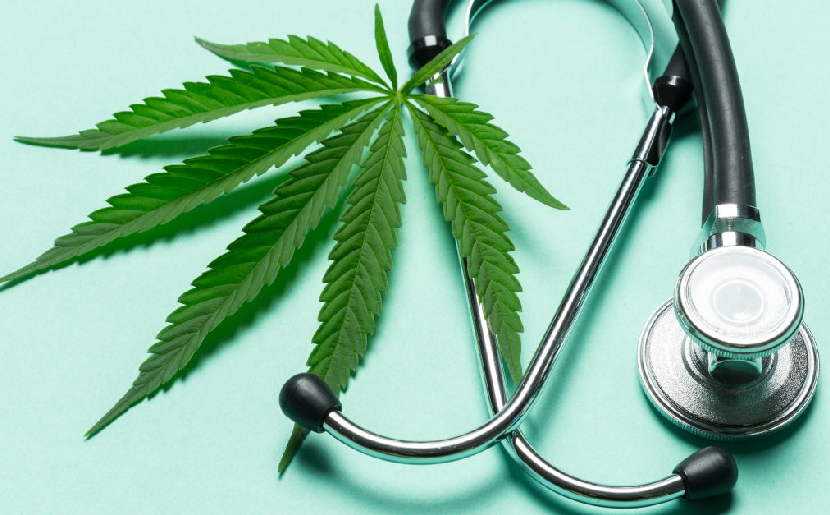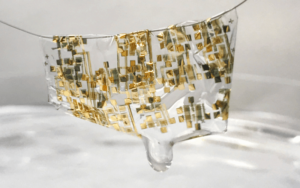
medical cannabis
In light of the ongoing opioid misuse crisis, state and federal policymakers and health care experts are searching for new ways to effectively treat the ill. One area of growing interest among public and clinical health researchers alike is cannabis for medical use.
On June 25, the Federal Drug Administration (FDA) approved Epidiolex, a cannabidiol (CBD) oral solution used for the treatment of seizures associated with two severe pediatric epilepsy disorders. This is the third cannabis-derived drug to be approved by the FDA since the approval of Dronabinol and Nabilone in 1985. Unlike the other two, which contain synthetic versions of THC, Epidiolex is the first FDA-approved drug that contains purified cannabidiol, a nonpsychoactive substance derived from cannabis.
After the approval of Epidiolex, FDA Commissioner Dr. Scott Gottlieb released a statement expressing the importance of conducting well-controlled clinical trials to prove the safe and effective medical uses for active chemicals in cannabis and its components.
Cannabis is complex because there are more than 80 active components in the plant. Gottlieb said that like any other drug, there must be comprehensive research about whether a new compound is effective, safe, properly dosed and appropriate to treat specific medical conditions.
It may be a while before other FDA-approved cannabis-derived products are on the market. For health conditions such as multiple sclerosis, anxiety and pain, the progress for clinical research on cannabis has been slow. The lack of adequate, large-scale clinical research is primarily because of the legal restrictions scientists face when they study cannabis.
A report from the National Institute of Health examines the many federal regulatory barriers researchers must comply with to research cannabis and its constituents. One issue is marijuana’s classification as a Schedule I drug. Under this classification, marijuana and all Schedule I drugs are defined has having a high potential for abuse and are not accepted for medical use. For example, the Drug Enforcement Agency (DEA) has 90 days to reschedule Epidiolex from Schedule I before it can be prescribed and sold as a pharmaceutical product.
Researchers also face barriers to cannabis supply. Since 1968, the University of Mississippi is the only contractor licensed by the National Institute of Drug Abuse (NIDA) to produce marijuana for federally sanctioned research. This means researchers do not have the option to shop around for different strains and quality of cannabis that may be necessary to address specific research questions.
The DEA changed its policy two years ago, opening its marijuana cultivation contract to other facilities. The DEA has received more than 25 applications since then but has not acted on any of them. Advocates of cannabis research are concerned that the Department of Justice (DOJ) will block the DEA from moving forward on these applications. On April 12, U.S. Senators Orrin Hatch (R-Utah) and Kamala Harris (D-Calif.), released a letter calling on the DEA to cease efforts to delay medical cannabis research.
At Web MD they point out that until more scientifically rigorous cannabis-related research can be conducted, both the risks and benefits of cannabis and its derivatives will be unclear. This leaves policymakers, medical professionals and patients without a way to make sound, evidence-based decisions on the potential benefits of medical cannabis.
The Healing Corner, a medical cannabis dispensary located in Bristol, CT, could pass for a spa. A potted sedge and weeping fig tree stand between padded chairs and loveseats. The walls are painted a cool taupe, and a blue tabletop fountain softly burbles in the reception area. There’s even a smiling Buddha statue in the consultation room, where David Slomski, PharmD, or one of the other three Healing Corner pharmacists reviews a menu of the dispensary’s offerings to select a product that will best suit a patient’s disease state and treatment goals. But make no mistake — the Healing Corner is devoted to the care of patients who have tried and failed to find relief through traditional medications.
When Connecticut finally allowed medical cannabis dispensaries to begin seeing patients in 2014, Slomski didn’t waste any time jumping on board. Fresh out of University of St. Joseph School of Pharmacy in Hartford, Slomski — now dispensary manager at the Healing Corner — was eager to seize the opportunity to be an entrepreneur and pioneer in the industry. “My license number is three,” he said. Slomski is also chair of the Connecticut Pharmacists Association (CPA) Medical Marijuana Dispensary Academy, a continuing education creator and presenter, and winner of CPA and Pharmacists Mutual’s 2015 Distinguished Young Pharmacist Award.
Connecticut was certainly the right place to do it. It was the first state in the nation to mandate that a registered pharmacist be onsite at all medical cannabis dispensaries.
The law permitting the use of medical cannabis in Connecticut was enacted in 2012, and it took two years to work out issues such as how to license dispensaries and pharmacists, where medical cannabis providers would obtain their products, and what conditions would qualify patients for a card.
Four more states — Arkansas, Minnesota, New York, and Pennsylvania — went on to mandate pharmacist involvement in the provision of medical cannabis. Though pharmacists are a common thread, the laws vary widely in what qualifying conditions make patients eligible for the program, how pharmacists and prescribers become authorized to prescribe or dispense, whether pharmacists or physicians must be onsite at dispensaries or be available as a consultant only, and more.
Here’s how it works in Connecticut. To get a medical marijuana card, a patient must be diagnosed by a Connecticut physician or advanced practice registered nurse as having one or more qualifying conditions. The only stipulation is that the provider has an active controlled substance registration in good standing and has access to the Connecticut Prescription Monitoring Program.
“They don’t need any special certification; they just need to register with the State of Connecticut to certify patients,” Slomski said. To work with patients using medical cannabis, however, pharmacists are encouraged to educate themselves by participating in continuing education and keeping up to date on any developments in the medical cannabis field. A dispensary pharmacist must be onsite at the dispensary facility during business hours.







